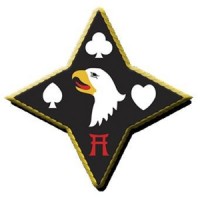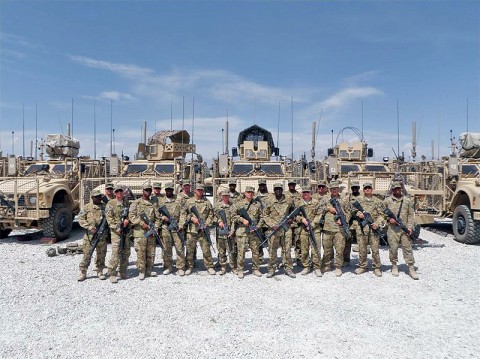Written by Spc. Michael Vanpool
101st Sustainment Brigade, 101st Airborne Division (AA) Public Affairs


Bagram Airfield, Afghanistan – Communication systems up. Check. Maintenance performed. Check. Final Manifest called. Check. A chaplain leads a prayer and the team rolls out the gate to resupply outlying forward operating bases.
Since arriving here this past May, the 59th Quartermaster Company, 142nd Combat Sustainment Support Battalion, 101st Sustainment Brigade, has run convoys throughout Regional Commands East and Capitol, and accumulated more than 66,000 miles on the road.
That’s roughly the same as driving from the American West Coast to the East Coast, 22 times.

“We’re getting equipment to the battle space owners to complete combat operations,” said Sgt. 1st Class David Rodriguez, platoon sergeant and convoy commander for the 59th QM Company. “The soldiers have a level of responsibility that wasn’t expected. We put a lot of their shoulders when we go out.”
The ranks 59th QM Company are not filled with the usual trucker drivers, also called 88 Mikes, of a convoy security company. Fuelers are driving the armored vehicles through the terrain and manning the gun turrets up top.
At Fort Carson, CO, the soldiers trained up, preparing for their Afghanistan mission with their rear headquarters, the 68th Combat Sustainment Support Battalion, 43rd Sustainment Brigade. Besides the technical aspects of driving a huge vehicle and shooting weapon, the fuelers worked on their sense of awareness while on the road.
“There’s a lot going through their heads, to know how to be a driver, gunner or AG [assistant gunner],” Rodriguez said. “They identify hazards, knowing they might come into small arms fire, IEDs, RPGs [rocket-propelled grenades].”
Some of the soldiers reported to the 59th with combat experience, including how to conduct convoy operations and security. “I already had the experience from my first deployment,” said Spc. John Gutierrez, a gunner and assistant gunner with the 59th, “so I helped the new guys understand the mission.”
Resupplying Afghanistan is a stark contrast to logistics in Iraq, where most the 59th soldiers deployed before. The battlefield here is intricate and diverse, from the terrain to the weather to the enemy.
“These guys like to fight,” Gutierrez said. “In Iraq, there weren’t a lot of complex attacks. Here, they attack with armor piercing RPGs and small arms attacks.”
Looking from a turret in Iraq, a gunner will pretty much see the same flat desert scene no matter what direction they travel. However, in the mountainous desert of Eastern Afghanistan, the terrain changes significantly depending on which direction the soldiers head out. Each mission is approached differently depending on the task force that the company is resupplying.
“You can’t generalize for the entire tour,” Rodriguez said. “You have to make it specific to the mission. We rely on the NCOs and soldiers to make the best decision on the ground while everyone is out there.”
Each completed mission marks another few hundred miles driven, and few hours of sleep and relaxation before the soldiers go on the road again.
“They come back from a mission,” Rodriguez said, “then 24 hours later, they’re getting ready to head out again. From the external to the internal of the vehicle, they make sure everything is good to go within the 72 hours they are back from mission and they go out again.”


